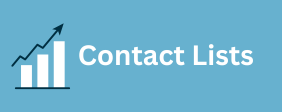Cold calling often receives a mixed reputation. Yet, it remains a powerful tool. When done right, cold calling excels at appointment setting. It connects businesses with new prospects. This direct approach opens doors. It builds vital relationships. Many sales cycles begin this way. Mastering this skill is crucial. It drives significant growth. Effective cold calling is not random. It requires strategic planning. It demands precise execution. It also needs continuous refinement. This guide explores key strategies. Learn to set more appointments. Boost your sales performance today.
The goal of cold calling is simple. It is to secure a follow-up meeting. This meeting is an appointment. It allows for a deeper conversation. It moves prospects through the sales funnel. This initial contact is critical. It must leave a positive impression. It also needs to convey value quickly. Successful cold callers are prepared. They understand their audience. They know their offering inside out. They also anticipate potential objections. Developing these skills transforms outreach. It turns cold calls into warm opportunities.
Strategic Preparation for Effective Cold Calling
Preparation is the bedrock of success. Before dialing, research is essential. Understand your target audience deeply. Identify their pain points. Recognize their business challenges. This knowledge informs your approach. It helps tailor your message. Generic calls rarely yield results. Personalized outreach resonates more. Know your product or service well. Articulate its unique benefits clearly. Connect those benefits to prospect needs. This foundational work saves time. It increases your chances of success.
Define your ideal customer profile. Who benefits most from your solution? Focus your efforts on these prospects. Gather relevant contact information accurately. Verify details where possible. This ensures you reach the right person. Set clear, measurable goals for each call. Is it to book a demo? Or to schedule a discovery call? Having a specific objective guides your conversation. It keeps you focused on the desired outcome. Proper preparation reduces anxiety. It builds confidence in your delivery.
Crafting Engaging Cold Call Scripts
A script is a valuable roadmap. It is not a rigid monologue. It guides your conversation flow. Start with a compelling opening line. Capture attention immediately. State your purpose concisely. Quickly establish relevance to the prospect. Avoid lengthy introductions. People have limited attention spans. Focus on their potential gain. Highlight how you can solve a problem. Or how you can fulfill a need.
Incorporate open-ended questions. These questions encourage dialogue. They uncover more information. Listen actively to their responses. This shows respect for their time. It also helps you adapt your pitch. Prepare for common initial objections. Think about how to address them smoothly. Practice your script regularly. Make it sound natural and conversational. A well-crafted script builds confidence. It helps you stay on track. It ensures key points are covered.
Mastering Objection Handling in Appointment Setting
Objections are a natural part of sales. They are not rejections. View them as requests for more information. Common objections include “not interested” or “too busy.” Acknowledge their statement first. Show empathy for their position. Then, pivot with a relevant question. Or offer a quick value proposition. For example, “I understand you’re busy. Many of our clients felt that way. Yet, they found our solution saved them X hours per week. Would you be open to a brief five-minute chat?”
Anticipate frequent objections. Develop concise, powerful responses. Practice these responses until they flow naturally. Do not argue with the prospect. Instead, seek to understand their concerns. Turn objections into opportunities. Use them to clarify value. Use them to reinforce benefits. Maintain a positive, professional tone always. Your confidence can be contagious. Effective objection handling builds trust. It keeps the conversation moving forward. It also increases your appointment setting rates.
Post-Call Follow-Up and Tracking Success
The call does not end when you hang up. Follow-up is critical for appointment setting. Send a brief, personalized email promptly. Reiterate the agreed-upon next steps. Confirm the scheduled appointment time. Include a calendar invite for convenience. This professionalism reinforces commitment. It also reduces no-shows significantly. Document every call outcome meticulously. Use a Customer Relationship Management (CRM) system. Record prospect details and specific notes. Track their preferences and objections.
Analyze your call data regularly. Look at your conversion rates. Which opening lines work best? Which industries respond positively? Where are you losing prospects? Identify patterns and trends. Use these insights for improvement. Adjust your script and strategy as needed. Continuous learning is vital. It refines your cold calling technique. It optimizes your appointment setting efficiency. This systematic approach ensures sustained success.
Leveraging Data for Optimized Cold Calling Campaigns
Data is a powerful asset in cold calling. It helps refine your targeting. It ensures you reach the right people. High-quality prospect lists are invaluable. They reduce wasted effort significantly. Utilize demographic and firmographic data. Understand market trends and industry needs. This intelligence guides your outreach. It allows for more personalized conversations. Data-driven insights enhance efficiency. They improve your overall campaign effectiveness.
Consider specialized data sources. For targeted outreach, specific databases can be very useful. For instance, obtaining a Germany Telegram Number Database 1 Million | TG User List might provide a large pool of contacts for specific regional campaigns. A/B test different call scripts. Experiment with varying value propositions. Analyze which messages resonate most. Personalize your approach at scale. Use data to segment your audience. Tailor messages to each segment. This strategic use of data optimizes results. It drives higher appointment setting rates. It leads to more qualified leads. It builds a stronger sales pipeline for future growth.
